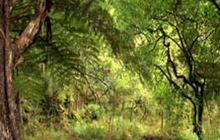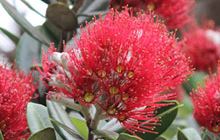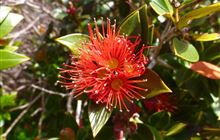Project Crimson Trust
Introduction
The Project Crimson Trust has been protecting and restoring pōhutukawa and rātā trees and their ecosystems since 1990.It seems hard to believe, but 30 years ago the future of pōhutukawa looked bleak. Possums were out of control and with a long history of exploitation and removal for farming and settlement, up to 90% of coastal pōhutukawa stands were gone.
Led by a bunch of enthusiastic and committed volunteers, Project Crimson partnered with DOC. They set out to replant areas of the Northland coastline that were depleted of pōhutukawa. Such was the success that over the years that mandate broadened to a national focus, to include rātā, and more recently a wider ecosystem approach encompassing all native trees.
More than 300,000 native trees have been planted by Project Crimson. See a map of Project Crimson’s planting sites.
Since 2016, the Trust’s flagship programme Trees That Count has added over 2 million trees more to this total. Find out more at Trees That Count.
While their planting now includes all natives, at the heart of Project Crimson remain their four hero species: mainland pōhutukawa and the tree rātā – northern, southern and Bartlett's. These are the most threatened by possums and people.
Project Crimson and Trees That Count are an example of successful partnership between business, government, science and community.
Find out more of Project Crimson’s other projects, visit the Project Crimson website.




